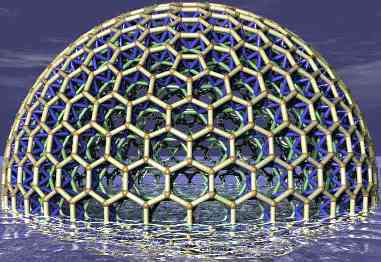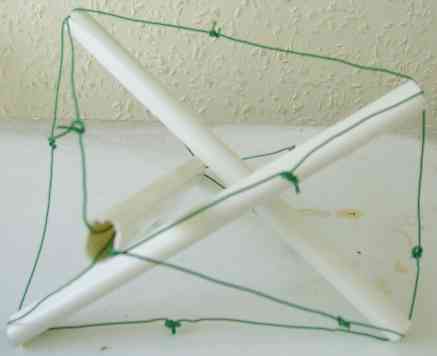
HexDome
Tube Loop Tensegrities

Tube Loop Tensegrity
|
Tube Loop Tensegrities
Previously, constructing tensegrities has typically involved
making grooves in the end of struts, or drilling holes in
the ends of them.
This can generate some problems:
- The poles extended beyond the end of the cables -
resulting an protruding sharp edges which tend to penetrate
any covering material;
- Holes and grooves in metal tubes tend to need deburring
if they are not to cause cables to fray.
- Drilling holes or sawing grooves increases construction
costs;
- Drilling holes or sawing grooves damages the strut
material - and generates local weak points;
Here we present a method of constructing tensegrities
using struts that are unadulterated tubes, with no
need for the cutting of grooves, or drilling of holes.
The methdod is pretty simple - it's illustrated in the diagram
above.
Each strut has one or more cables running down its middle.
Each cable passes through two or more struts.
Problems
The model illustatated was constructed using wire and PVC.
The stiffness in the wire makes it difficult to tell how
this particular model would behave if everything was
perfectly frictionless. However in theory some models
without friction will still retain their structural
integrity.
In practice a number of measures could be taken to prevent
motion of individual cables in the tubes if that proves
necessary - including steps such as twisting the cables
inside the tubes together, and inserting dowels into the
ends of the tubes.
This modelling technique typically results in increased
expenditure on cables. You can often avoid having more than
two cables running through each strut, though - once you
have two cables, others can usually be looped around them or
tied to them.
Tim Tyler |
Contact |
http://hexdome.com/
|